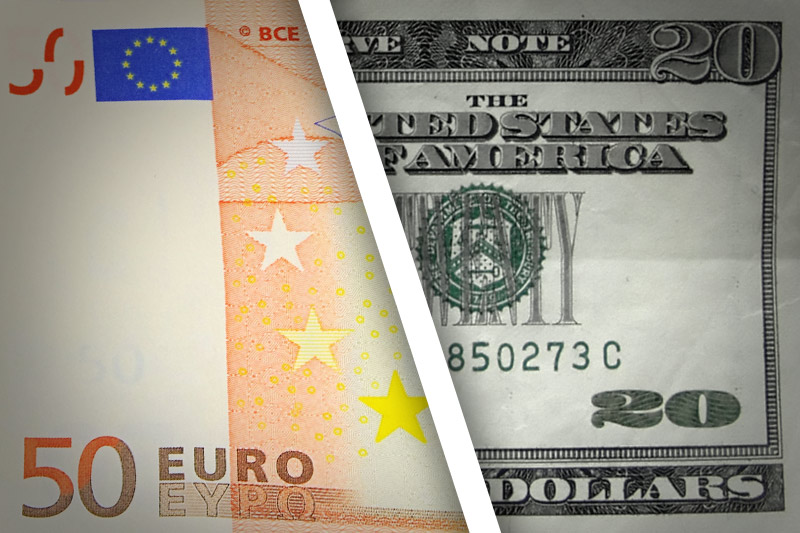Investing.com -- EUR/USD inched down on Tuesday, extending losses from the last several sessions, as upbeat labor and GDP data in the U.S. bolstered the greenback, slightly increasing expectations for multiple interest rate hikes from the Federal Reserve this year.
The currency pair traded between 1.1359 and 1.1408, before settling at 1.1372, down 0.10% on the session. The euro has now closed down against the dollar in sixth consecutive sessions, retreating from multi-month highs last week when it posted a six-day winning streak. Though the euro is down fractionally against its American counterpart over the last month, it is still up nearly 5% since the start of the year.
EUR/USD likely gained support at 1.0538, the low from December 3 and was met with resistance at 1.1713, the high from Aug. 24.
On Tuesday morning, the U.S. Department of Labor said Tuesday that job openings in March rose by 149,000 on a seasonally-adjusted basis, lifting the job opening rate by 0.1% to 3.9%. Hiring rates, though, fell slightly by 0.1% to 3.7%, providing indications that employers experienced difficulty finding qualified workers. The report came in the wake of a relatively soft monthly employment report last week, which showed that nonfarm payrolls rose in April by the lowest level in seven months. Separately, the Federal Reserve Bank of Atlanta said Tuesday that its GDPNow Forecast model now sees an increase of 2.2% in second quarter GDP, up from estimates of 1.7% on May 4.
The Federal Reserve has continually reiterated that it is taking a data-driven approach to the timing of its first interest rate hike in 2016. Any rate hikes by the Fed this year are viewed as bullish for the dollar, as investors pile into the greenback in an effort to capitalize on higher yields.
Earlier, New York Fed president William Dudley noted in a closely-watched speech in Zurich that he doesn't believe the dollar would falter if other top currencies materialized as alternatives to the greenback as the world's reserve currency. Last Friday, Dudley emphasized that the U.S. central bank could still raise interest rates as much as twice this year in spite of soft employment figures in the Labor Department's April jobs report. The dollar has lost approximately 6% against its main rivals over the last five months.
"I don't see this as a zero-sum game," Dudley said. "If other countries' currencies emerge to gain stature as reserve currencies, it is not obvious to me that the United States loses. I believe that the most important goal must be to keep our own house in order. If we do this, then I expect that the U.S. dollar will earn the right to remain the most important reserve currency in the world."
Elsewhere, industrial production in Germany plunged 1.3% in March, down from declines of 0.7% a month earlier and sharply below consensus forecasts of Minus-0.3% for the month. Also in March, U.K.'s trade deficit for the first three months of the year surged to an 8-year high at GBP 13.3, its highest level since the Financial Crisis. A controversial "Brexit" referendum on the U.K.'s status in the European Union will take place on June 23, days after the Federal Reserve's June meeting.
The U.S. Dollar Index, which measures the strength of the greenback versus a basket of six other major currencies, gained more than 0.15% to an intraday high of 94.33, before settling at 94.22. The index has closed higher in each of the last six trading days.
USD/JPY surged more than 0.90% to an intra-session high of ¥109.38, before closing at 109.31. Since falling to 18-month lows last week, the dollar has rallied nearly 3% against the yen.
